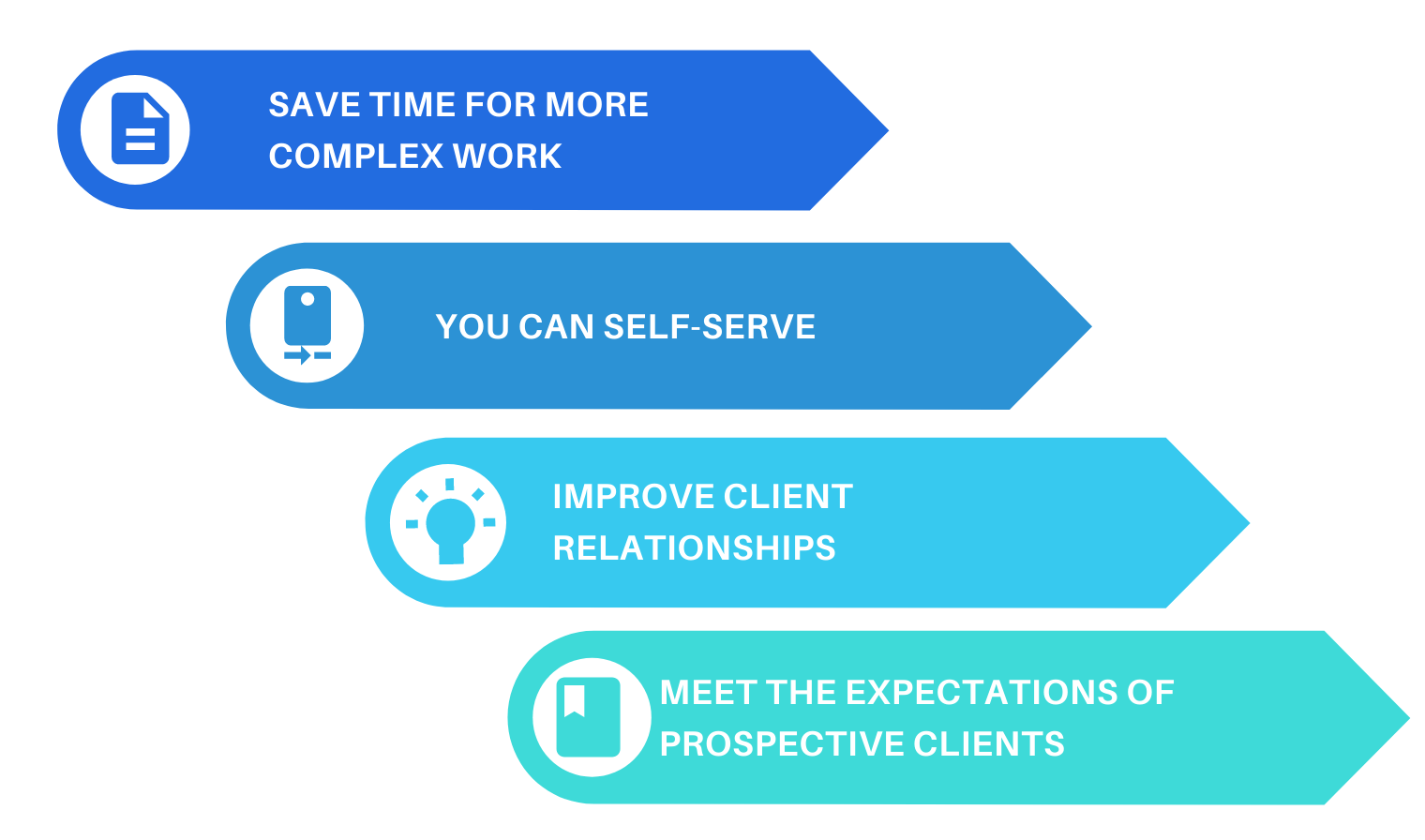A report by McKinsey in 2017, identified an interest by banks to deploy automation technologies to improve productivity, cost savings and improvement in customer experiences. Today, the digital inertia has faded and banks are showing an increasing interest in technology-driven solutions. Those that have invested in automation have come out stronger than ever, and according to a survey by Deloitte, ‘laggard’s still have the chance to leapfrog competitors if they take swift action to tech modernisation’. With automation, banks reduce operational costs, while performing more efficiently with greater resilience and adaptability to the market.
In this week’s blog post we will look at why legal teams, both in-house and law firms, should adopt document automation across their standard banking precedents:
- What standard banking precedents can you automate?
- How can Banking and Finance teams benefit from document automation
- How do you measure the success of adopting automation
1. What standard banking precedents can you automate?
A large number of banking documents are drafted in a single transaction. Each can be extremely complex, lengthy and highly customised to the needs of the lenders, or the borrower. Automating the drafting process will avoid the time-consuming, draining and not-so-fun task of updating each square bracketed field. Using technology, such as Avvoka’s document automation, negotiation and analytics tool, banking teams can draft bespoke documents through answering a questionnaire. Banking teams are adopting this solution because while improving the time it takes to draft these documents, it materially reduces the risk of error. In return, there is a reduced delay in transactions and flawless documents.

Dynamically updating text fields can only take you so far. So, document automation provides a multitude of solutions in the drafting process. For example, often the creation of a single document may require the drafting of ancillary documents, such as board minutes. Workflow functions, such as those built by Avvoka, can create a bundle of related documents populated by existing contract data. There is no need to re-input data, or provide the answers to questions that have already been answered.
Below is a common list of documents we have automated for the banking and finance industry;
- Facility agreements
- Loan agreements
- Legal opinions
- Security documents
- Corporate authorisations
- Minutes and Resolutions
- Ancillary documentation
As this demonstrates, Avvoka can handle simple as well as highly complex legal documents, even as far as a couple of hundred pages of a syndicated loan facility.
We have considerable experience automating the broad spectrum of banking documents through our partnership with Allen & Overy and the Loan Market Association (LMA) to develop LMA.Automate.

Launched in June 2021, LMA.Automate is a cloud-based platform offering an end-to-end solution to automate all the standard LMA template documentation. Under the current transition of LIBOR to RFR’s, the platform has been especially useful in updating internal precedents, such as recently releasing a Corporate Lending Facility. While this is one example, there is clearly wider scope for automation to facilitate a broader set of corporate lending scenarios.
Whether you are a bank or a law firm, there are far-reaching benefits to automating the production of loan documents. Firstly, and while this might appear obvious, automation significantly reduces the time required to generate loan documents and substantially improves their quality by mitigating the risk of errors.
Secondly, under a centralised platform, LMA.Automate provides a safe environment for confidential transactions. Each user must comply with strict access controls to a separate and secure server, where institutions can have their own dedicated area.
In addition, Avvoka’s intuitive user interface makes automation accessible and easy-to-use. Supported with a wide suite of training materials, users can easily adopt the tool and integrate it with their existing stack and way of working. Finally, since the solution can cater for the entire document lifecycle, the data can be captured, structured and analysed. Users have the option to oversee the impact of regulatory changes to their templates and harness the data to better inform their own practices.

2. How can Banking and Finance teams benefit from document automation
Automation is not here to replace the work of banking & finance teams. Instead, it looks to add value by reducing the time-consuming and draining work that goes into drafting documents. There will always be a high volume of work. So, the solution targets to help teams pluck out the high-value work amongst the high volume of documents.
This can be done in a number of ways
Improving Efficiency
Inevitably, automating the drafting process creates documents at a rapid pace. Where It could have taken weeks, or even months, to draft documents by manually inputting standard precedents, it can now take a matter of minutes.
Automation also means users can amend their contracts in rapid time. On one hand, using a questionnaire structures the data in each transaction, providing great visibility to the agreement. Meanwhile, it prevents that information from having to be re-entered into the document. This is the result of using linked data points that are inextricably linked to a question. Ultimately, meaning users only need to answer a question once to dynamically update all the input fields in the agreement.
At Avvoka, we realise that often things change during a transaction, causing banking teams to trawl back through the documents to make amendments. Therefore, we enable our users to go back into the questionnaire and make these changes, automatically updating the entire document in a matter of clicks and in real-time.

Accuracy
Manually drafting documents comes with a higher risk of error. As you might expect, trawling through pages of text and updating text fields is exhausting. These small mistakes can be incredibly costly further down the line.
There’s no need to re-write the same word a million times over. Document automation can link each field to a singular question, so users only need to write that word once. While the chances of making a mistake in the questionnaire are slim, if one is made, it is incredibly easy to amend. Users can be sure that the information entered in the questionnaire will be consistent throughout the document, assuring a fantastic level of accuracy.
Automation has been around for a long-time, but Avvoka is unique in developing an intuitive method of automating documents using no-code, visual logic. We find it is important that legal teams enhance their amazing skills by working closely with technology. Complex code within documents is unhelpful, alienating and quite daunting for lawyers. Avvoka’s colour-coded logic means that legal teams can review documents and understand the automation which has been applied. As the document progresses from each review and approval, there is less of a need to turn to external parties to amend the document. Ultimately, saving more time.

Frees up capacity
Finance and Banking teams may feel frustrated by the time spent drafting transactional documents. Often, due to the volume of documents, this administrative burden reduces a legal team’s capacity to fairly low-value work. It may take weeks, or months to manually create a first draft, whereas document automation can draft legal documents in a matter of minutes.
Employees derive little satisfaction doing repetitive tasks and staying late, which increases the risk of mistakes and burnout. When the task can be automated, employees will have more time to focus on higher-value legal work. This increased efficiency will have considerable benefits to the company’s capacity to take on more client work without needing to work longer hours. It’s a win-win. On one hand, employees are more productive and manage to get home on time, while on the other the company increases its capacity and quality of services, so increases profit margins.
Automation delivers clients more for less. Since the key information is structured clearly in Avvoka’s questionnaire, legal teams can easily identify and focus on high-value work. Legal teams can then focus on more contentious aspects of a transaction, which by doing so improves the quality of legal advice. Clients will appreciate more time being spent away from drafting, freeing more time and focusing on better service. Finally, alternative billing fees can be explored as well.

Track status of documents
There is a huge volume of documents involved in each banking matter. Generally, these documents are passed between parties by email and it can be difficult to keep track of the latest draft, or have to dig back through email chains to find the relevant documents. Avvoka’s cloud-based solution acts as a single repository for all the documents to a transaction
These documents can be tagged, or put into folders, which makes it easy to find the relevant documents relating to a particular transaction, as well as see the progress of those documents right through to their signature.
Since the drafting, collaboration and negotiation of documents can all be done on Avvoka, we have built an analytics area that accurately tracks the activity of those documents into valuable data. This information could be used to identify what is becoming the market standard contractual clauses, to identify the most contentious clauses of a document during negotiation. Consequently, automation provides an opportunity to surface the information which is contained within the documents into visual, digestible information to result in better-informed decisions.

Automate workflows
Workflows can help banking and finance teams in two key ways; firstly in creating related documents, and secondly, send automatic notifications to individuals about the progress of that document (e.g. call in approvers to review the document).
On the latter, a single banking matter Is likely to include lots of different people working across different nuances of the transaction. For in-house legal teams, this can create bottlenecks due to the volume of work that needs approval, while for law firms a document may need to pass through very busy senior lawyers. With workflows, defined triggers can request approval for the document. Whether it be the General Counsel or a partner, a request for approval will be sent by email taking them straight to the document, and some actions regarding that document will be blocked until the approval is granted (e.g. sending it to the counterparty, downloading it, etc). Approvals can be triggered in multiple ways, such as the creation of the document, a questionnaire trigger (such as deal value exceeding a certain value), or by a change in a document status (e.g. being ready for signature).
Meanwhile, creating related documents is extremely useful when teams are required to draft ancillary documents. For example, a term sheet can be automatically created by pulling the existing data from the initial transactional documents. Often, once documents have been signed legal teams will be tasked with post-completion analysis which involves looking back through the huge volume of documents. Automation meanwhile can automatically generate these documents so deadlines are never missed.

3. How do you measure the success of adopting automation.
Having touched upon the benefits of automation, it is worth mentioning how you can derive value from it. For most businesses, the driving factor of success leans on financial metrics. Ultimately, a solution that cuts the cost of production while at the same time producing more, achieves higher profit margins.
But, for many law firms it’s more complicated. This is because their pricing model is cost-based, relying on the length of that production using the Billable Hour. Legal teams should not only consider the financial metrics but also look to the softer benefits. To find out more about understanding alternative measures for success, you can read our blog post, “Financial metrics and document automation”.
For Banking and Finance teams, automating the drafting process will play a significant role in improving the quality and consistency of your documents. Compare the level of inconsistencies in manually drafted documents, and weigh this figure with those that have arisen from automated documents. You would expect very little, if at all any inconsistencies with automated documents. This result demonstrates one way to measure the success of implementing automation without considering financial metrics.
Similarly, you could consider the improvement in job satisfaction by taking away manual, repetitive tasks, such as updating square bracketed fields. Instead, lawyers can spend more of their packed schedules on higher-value work, keeping them stimulated and avoiding late nights.
On this note, it might be worth considering both the softer, and financial benefits automation could bring to your business.






